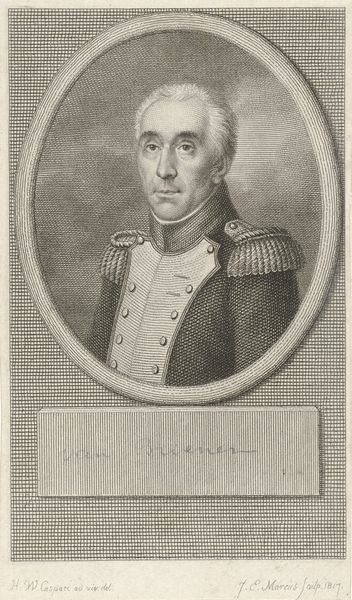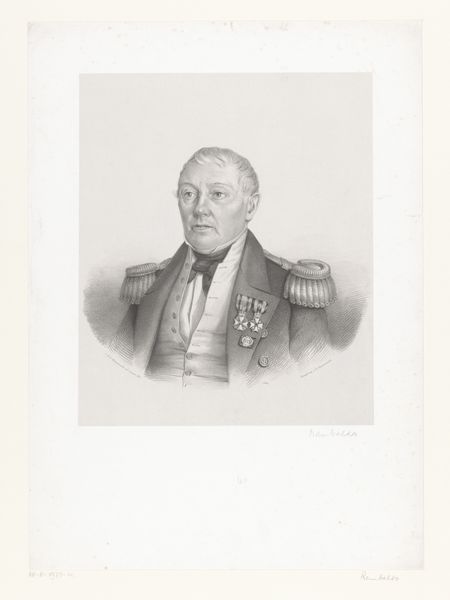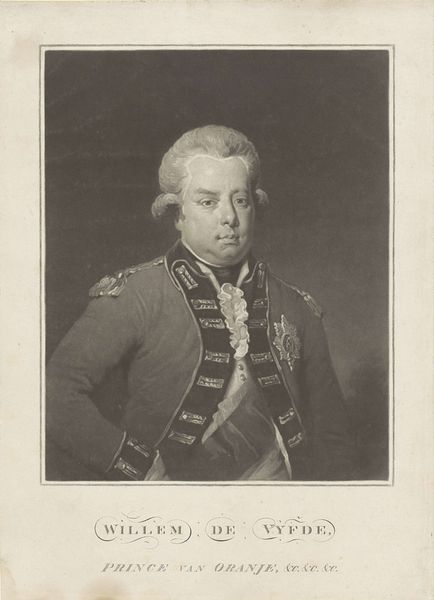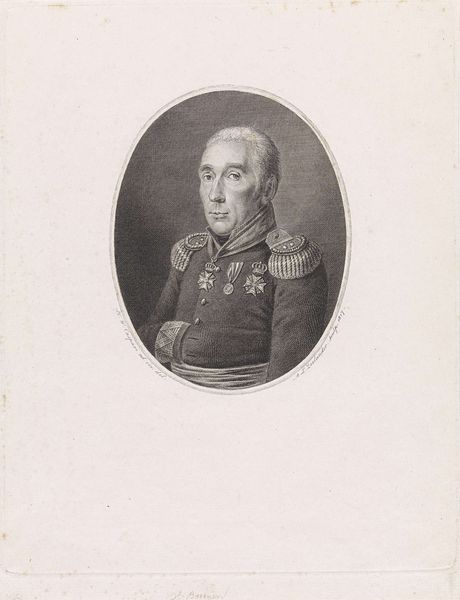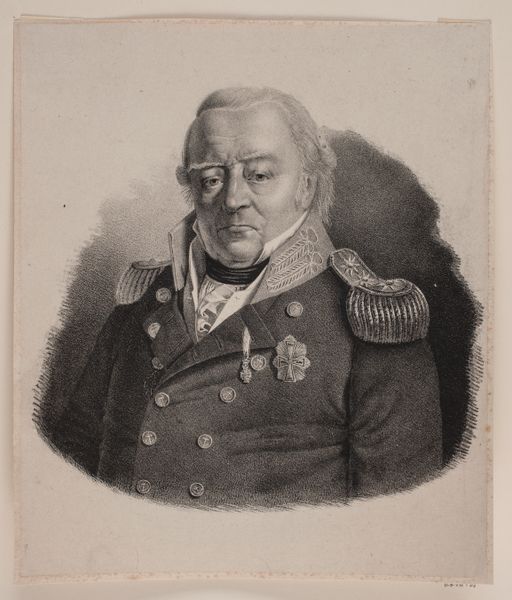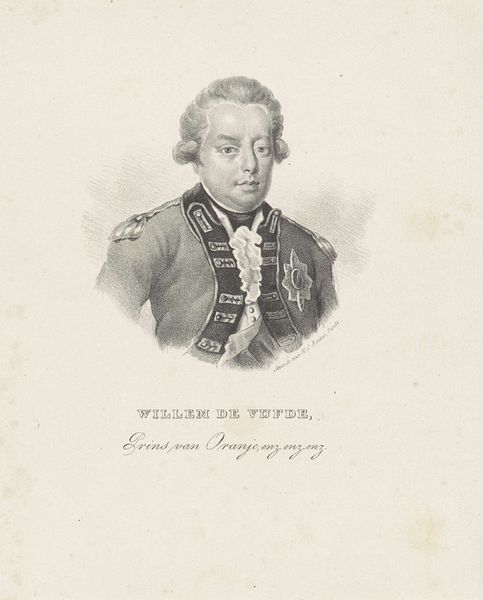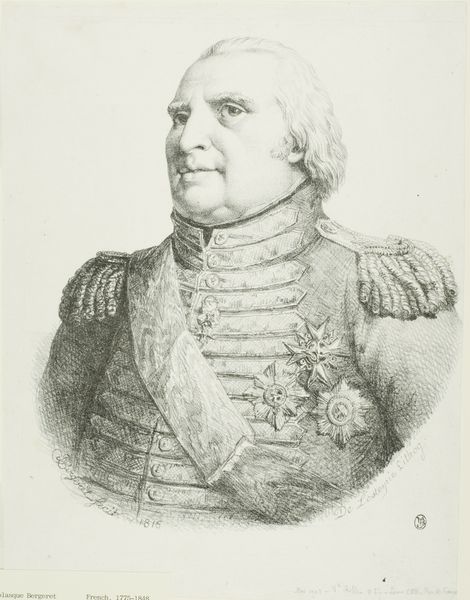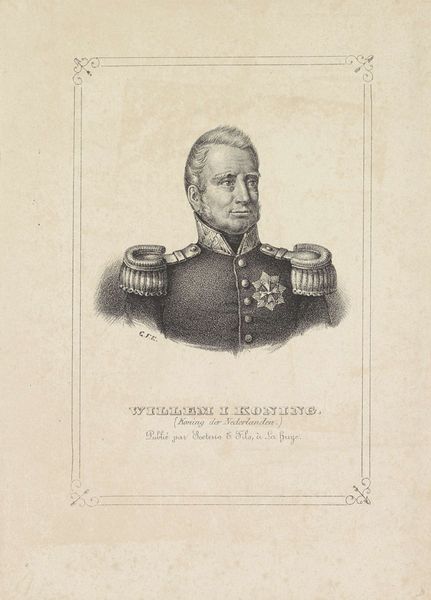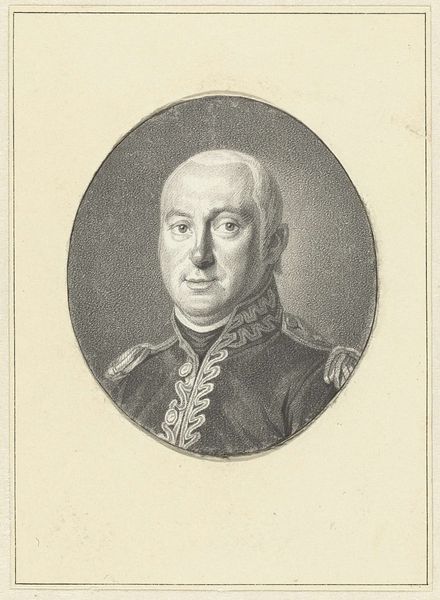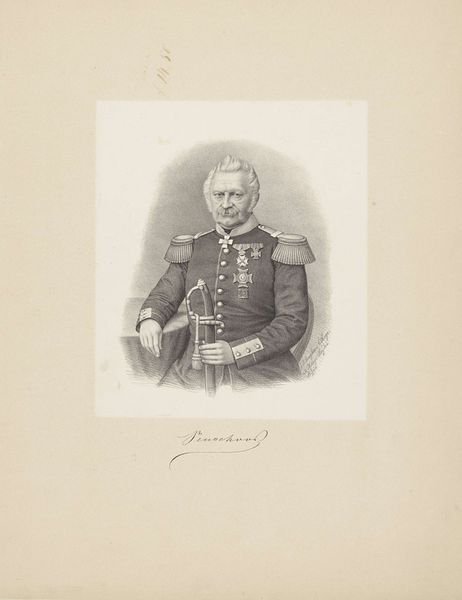
print, graphite, engraving
#
portrait
# print
#
pencil drawing
#
graphite
#
history-painting
#
academic-art
#
graphite
#
engraving
Dimensions: height 225 mm, width 152 mm
Copyright: Rijks Museum: Open Domain
Editor: So, this is a print, "Portret van Willem V, prins van Oranje-Nassau," made sometime between 1834 and 1840 by N.M. Schild. It's primarily graphite and engraving. I’m immediately struck by its formality. It feels very... official. What can you tell me about it? Curator: Well, considering it depicts Willem V, and the historical context in which it was made, that sense of formality isn't accidental. Portraits like these were crucial in shaping public perception of authority. Ask yourself, who was the audience for this print? Editor: I imagine a wide range of people, from nobility to maybe even merchants? Reproductions would make it more accessible, right? Curator: Precisely. The medium is essential. Printmaking allowed for dissemination, shaping collective memory and solidifying Willem V’s image in the Dutch consciousness, decades after his death. Did Willem V's actual reign match the strength conveyed by this portrait, in your opinion? Editor: Probably not! From my understanding, that period was pretty turbulent, marked by growing Patriot unrest and eventual exile. I see this portrait as attempting to re-establish a sense of stability in a period where that certainty no longer existed. Curator: Exactly! It’s a piece of political machinery as much as a work of art, actively constructing a narrative about leadership and national identity in a period craving for legitimacy. Consider also how displaying such prints served social purposes in homes and public spaces. Editor: That makes perfect sense. It highlights the power of imagery in building collective memories and potentially masking more complex historical realities. Curator: And remember, that interplay between artistic representation and historical context reveals so much about how we construct our understanding of the past, and, ultimately, our present. Editor: I hadn't considered how active a role art plays in historical narratives, beyond just depicting what happened. Thank you for helping me connect the dots.
Comments
No comments
Be the first to comment and join the conversation on the ultimate creative platform.
